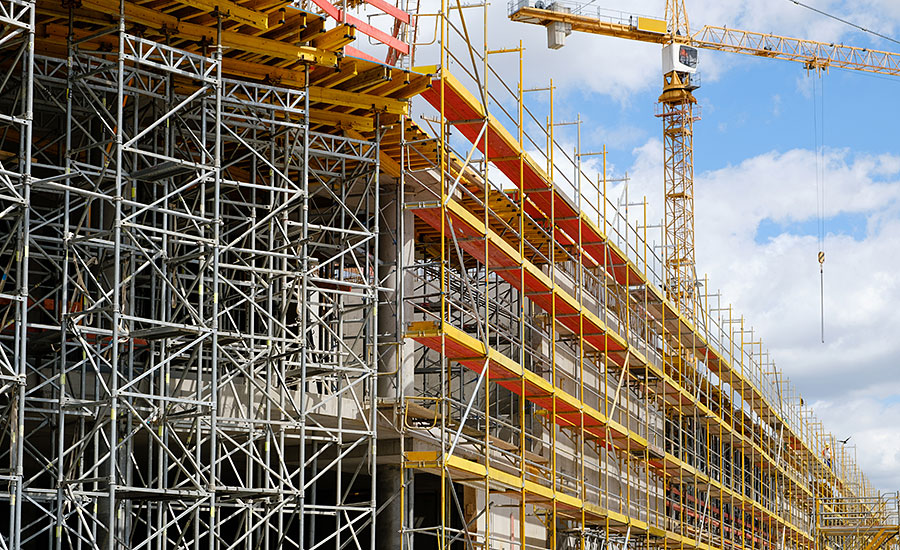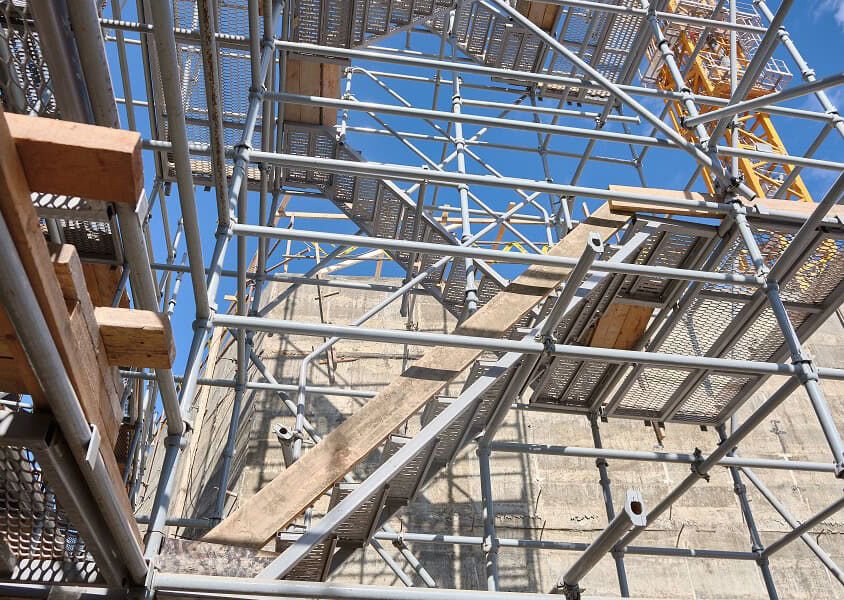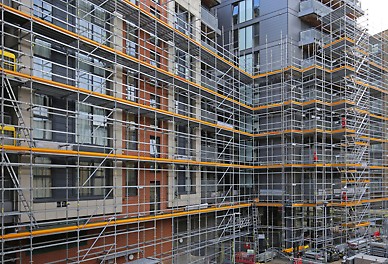Temporary Roof Scaffolding to Ensure Safe Working Conditions During Projects
Temporary Roof Scaffolding to Ensure Safe Working Conditions During Projects
Blog Article
Exploring the Different Sorts Of Scaffolding Utilized in Construction Tasks
The construction industry counts heavily on different kinds of scaffolding to fulfill specific project demands, each offering unique benefits and applications. Typical frame scaffolding gives a strong structure for basic tasks, while suspended scaffolding is important for job on skyscraper frameworks.

Typical Structure Scaffolding
Conventional frame scaffolding is just one of the most extensively used methods in the building and construction industry as a result of its toughness and convenience. This system includes straight and vertical structures that are set up to create a secure platform for employees and products. The primary components include upright messages, straight ledgers, and angled dental braces, which together give a solid framework that can support considerable lots.
One of the crucial benefits of typical frame scaffolding is its adaptability to different building jobs, varying from domestic structures to large business structures. The modular style permits easy setting up and disassembly, making it reliable for both long-lasting and short-term jobs. Furthermore, the system can be tailored in elevation and width, suiting different structure layouts and website conditions.
Security is extremely important in scaffolding applications, and typical structure systems are equipped with guardrails and toe boards to stop falls and make certain employee defense. Regular inspections and adherence to safety and security laws are critical in keeping the stability of the scaffold (Scaffolding). In general, traditional structure scaffolding continues to be a fundamental choice in the building and construction sector, giving a reliable system for labor and improving general project performance

Suspended Scaffolding
Put on hold scaffolding offers an one-of-a-kind solution for building tasks that require access to raised surfaces, especially in scenarios where traditional framework scaffolding might be impractical. This sort of scaffolding is commonly suspended from the roofing or top levels of a structure, using a system of platforms, ropes, and pulley-blocks to create a working area that can be adapted to various heights.
One of the primary advantages of suspended scaffolding is its versatility. It can be easily rearranged or reduced to suit adjustments in construction needs, making it optimal for jobs such as home window setup, frontage job, and upkeep on skyscraper buildings. Furthermore, the very little footprint of suspended scaffolding enables better use ground space in urban environments, where space is frequently limited.
Safety is an important factor to consider in using suspended scaffolding. Proper rigging and anchoring systems must be employed to make certain security and stop accidents. Operators must additionally be educated in the secure usage of this devices. Generally, suspended scaffolding provides a reliable and reliable solution for accessing look at here hard-to-reach locations in different construction scenarios, boosting both efficiency and safety on website.
System Scaffolding
System scaffolding, frequently considered a modern remedy in the scaffolding market, is composed of pre-engineered elements that can be quickly constructed and adapted for numerous construction projects. Scaffolding. This kind of scaffolding is characterized by its modular style, which enables adaptability and effectiveness on work sites, suiting various elevations and architectural needs
Generally made from high-strength steel or light weight aluminum, system scaffolding provides boosted sturdiness and security. The elements include vertical messages, horizontal journals, and diagonal braces, which adjoin safely, making sure a durable framework. The layout often integrates standard installations, simplifying setting up and disassembly procedures, consequently reducing labor time and costs.

Rolling Scaffolding
Moving scaffolding is a functional alternative to conventional set scaffolding, created for flexibility and simplicity of use on construction websites. This sort of scaffolding includes a system sustained by frameworks with wheels, allowing employees to conveniently move it as needed. The wheelchair feature considerably enhances performance, as it minimizes downtime associated with disassembling and assembling repaired scaffolding.
Generally constructed from light-weight products such as aluminum or steel, rolling scaffolding uses a sturdy yet mobile service for jobs needing constant repositioning - Scaffolding. It is particularly helpful in jobs such as painting, drywall setup, and electric job, where access to different elevations and areas is necessary
Security find more information is vital in rolling scaffolding design, with attributes such as securing wheels to stop unintended motion when Visit Your URL in use, and guardrails to secure employees from falls. Additionally, lots of versions are flexible in elevation, suiting various project requirements.
Cantilever Scaffolding

The layout of cantilever scaffolding usually involves utilizing brackets or arms secured to a building or framework, enabling the system to extend external safely. Security is paramount; therefore, these scaffolds must be crafted to withstand different lots and environmental problems. Regular evaluation and maintenance are important to make certain structural stability and employee safety and security.
Cantilever scaffolding is preferred for its flexibility and reliable use area, making it a prominent option in metropolitan settings where space restrictions are common. It promotes less complicated accessibility to high elevations, ultimately adding to the general efficiency of building and construction projects. Similar to all scaffolding types, proper training and adherence to security criteria are crucial for workers using cantilever scaffolding.
Conclusion
Typical structure scaffolding supplies stability, while put on hold scaffolding uses flexibility for elevated jobs. System scaffolding helps with quick setting up, and rolling scaffolding improves movement for differing work environments.
Typical framework scaffolding offers a tough foundation for basic tasks, while put on hold scaffolding is necessary for work on skyscraper structures.Moving scaffolding is a flexible choice to standard set scaffolding, created for mobility and convenience of use on building and construction sites. As with all scaffolding kinds, proper training and adherence to security standards are important for workers using cantilever scaffolding.
Traditional framework scaffolding provides stability, while put on hold scaffolding provides convenience for elevated jobs. System scaffolding assists in fast assembly, and rolling scaffolding boosts wheelchair for varying work settings.
Report this page